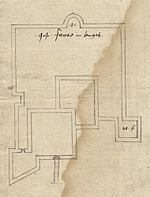Wildheart Animal Sanctuary
1950s establishments in EnglandBuildings and structures on the Isle of WightSandownTourist attractions on the Isle of WightZoos in England

The Wildheart Animal Sanctuary, previously known as the Isle of Wight Zoo and Sandown Zoo, is a wildlife sanctuary on the coastline of Sandown, Isle of Wight. The Isle of Wight Zoo was privately owned, but it became a charitable trust in 2017 and was renamed as the Wildheart Animal Sanctuary in 2021. The Sanctuary is "dedicated to rescuing exotic animals from harm and rehabilitating them in their forever home". As part of the European Endangered Species Programme, the Isle of Wight Zoo previously had success breeding several species of Madagascan animals including the critically endangered black-and-white ruffed lemur. It is now a non-breeding Sanctuary for rescued animals.
Excerpt from the Wikipedia article Wildheart Animal Sanctuary (License: CC BY-SA 3.0, Authors, Images).Wildheart Animal Sanctuary
Yaverland Road,
Geographical coordinates (GPS) Address External links Nearby Places Show on map
Geographical coordinates (GPS)
| Latitude | Longitude |
|---|---|
| N 50.6609 ° | E -1.1394 ° |
Address
The Wildheart Animal Sanctuary
Yaverland Road
PO36 8QB
England, United Kingdom
Open on Google Maps










